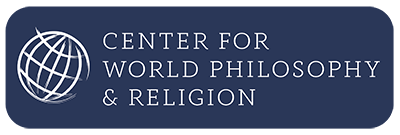 By Marc Gafni
By Marc Gafni
Editor’s note: The following essay is published as a white paper of the Center for World Spirituality think tank. Our Spirit’s Next Move blog is pleased to announce the paper’s availability.
The Second Stage: from Silence to Sound
The beginning of freedom is the emergence of voice. This stage is expressed both by the initial cry of the Israelite slaves that broke their silence, as well as by Moses’ arrival on the scene. “When Moses came, voice came,” writes the Zohar. Moses does what the charismatic revolutionary always does: he gives voice to the people. Indeed, biblical myth text records the beginning of redemption with the following words: “”It came to pass in the course of many days that the King of Egypt died and the children of Israel sighed by reason of the bondage and they cried out and their cry came up unto God.” The enslaved Israelites are received by the presence of God at the point when they move from the dumb silence of the slave to sound which is the beginning of speech, the characteristic of a free people. This “cry” is not an elegantly articulated protest – it is a cry as in the cry of a wolf, or the cry of an infant. It is primal, impassioned, pre-civilized, a howl of protest that makes it into the halls of heaven, heard by God himself.
For the first time the enslaved can express distress. They seek to articulate words that are not yet ready to form themselves on their lips. At this stage of moving toward freedom, we do not yet know how to tell our story. We do not know what we would do with the world if it were given over to our stewardship. We just know that we must protest.
The biblical myth symbol (Leviticus 25) for the transition from slavery to freedom is the primal blast of a ram’s horn. No trumpet of gold, it is rather the rawness of the ram’s horn that captures the slave’s first fitful sounds. The first thing a revolutionary movement must do is sound its ram horn–start a newspaper, set up a radio station, build an internet site. It is not by accident that the fundamentalist and totalitarian states are trying to disallow or severely limit internet access. Freedom’s beginnings are expressed in the first shouts of protest.
The sixties and seventies were such second-stage revolutionary generations. This helps explain why so many sixties hippies became late seventies and early eighties yuppies and then transformed again into the establishment of the nineties. The feeling of distress generated protest – sound and even the first glimmerings of voice–but there was no alternative vision of society to generate “speech.” Similarly, many third world revolutionaries reflect such second stage thinking. Consequently, as we all know, that not a few third world revolutionaries became the leaders of far more repressive regimes than the ones they overthrew. Because they lacked speech to articulate the primal manifestations of voice, they needed to repress all of their own pain, the very distress and disease that initially led to the revolution.
What can they do when the revolution has happened and the dis-ease remains? Only two choices are available. The revolutionary can choose to look inside personal and societal soul in a very profound way, attempting to wrestle with the dis-ease at its source and not merely on a symptomatic level. This would involve addressing the ills of society that provoked revolution–through the creation of a new society with just laws and a conceptual framework to insure the continued freedom of the people. This is the move from primal voice to speech. Or the revolutionary can lash out to avoid the necessity of confronting his own emptiness. Lashing out is always easier but not a stage of growth. It continues and repeats the stage-two voice of protest. The repression it produces is often brutal and animalistic.
Like all stages of growth – stage two is necessary and positive when it is part of a process. Arrested growth, however, always produces some form of pathology.
The Third Stage: From Sound to Word
In the third stage, voice gives birth to word. Now we are able to tell our story – to speak authentically with each other, to articulate clearly both our needs and our visions of a better world. A rebel newspaper is no longer sufficient. Only in the writing of a constitution or a Declaration of Independence is the next stage of freedom achieved. Or in the case of the sixties, a spiritual movement needed to be born which attempts, however imperfectly, to write the books of a New Age.
Three biblical myth word symbols capture this third stage in mystical consciousness.
The first word symbol is called in Hebrew the haggadah””literally, “the story telling.” This is the very name of the myth text we read from at Pe-Sach, when we reclaim our story. By assuming authorship of our stories, we assert spiritual authority over our lives. We are no longer subject to will and directive of the taskmaster, priest, or rabbi. By becoming authors of our own haggadah, we progress past the protest and actually become free.
The master Kalonymous Kalman explains that the demarcating characteristic of messianic times is that every person will be his or her own spiritual master. This is his radical reading of the biblical myth vision expressed by prophet Jeremiah “And no man will anymore learn from his fellow to know God, for everyone will know Me from the wise to the simple.” Every person will find voice and articulate speech and those words will be his or her spiritual guide. In the end, we will discover that we are the sacred book and the sacred book is us. In fact, there is a tradition in Jewish prayer to take the Torah scrolls adorned with crowns of silver and fine cloth and carry them around the prayer room, allowing everyone to touch and kiss them. Where I pray, we started a tradition of also kissing the person chosen to carry the scrolls, recognizing that she too is a sacred scroll.
This post is part of a series of posts “Foundations for World Spirituality: Learning the Language of God” which begins with Part 1. For Part 2, Part 4, and Part 5, follow the links.
